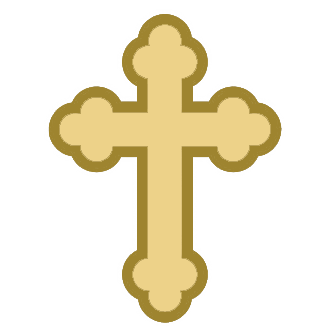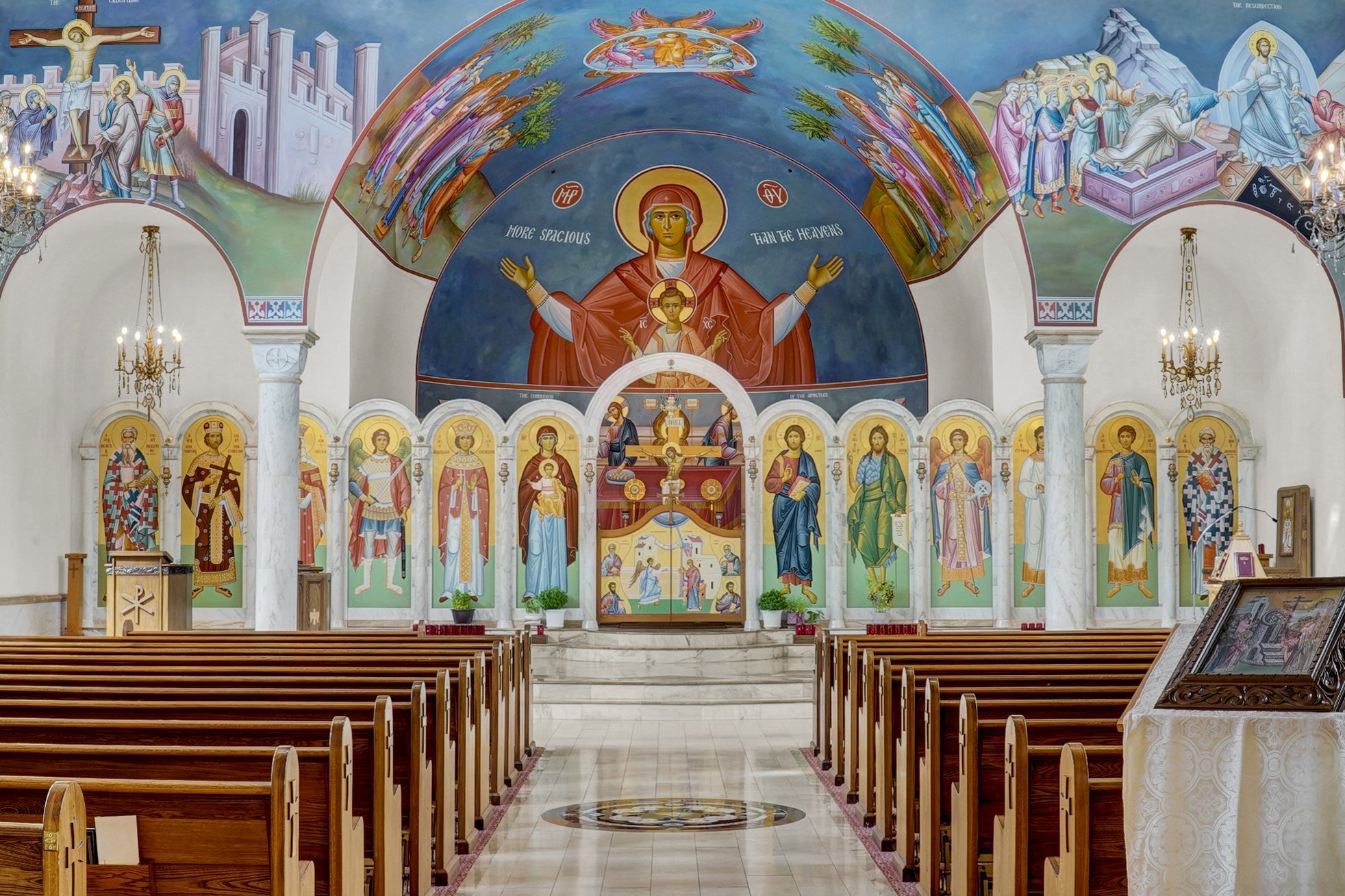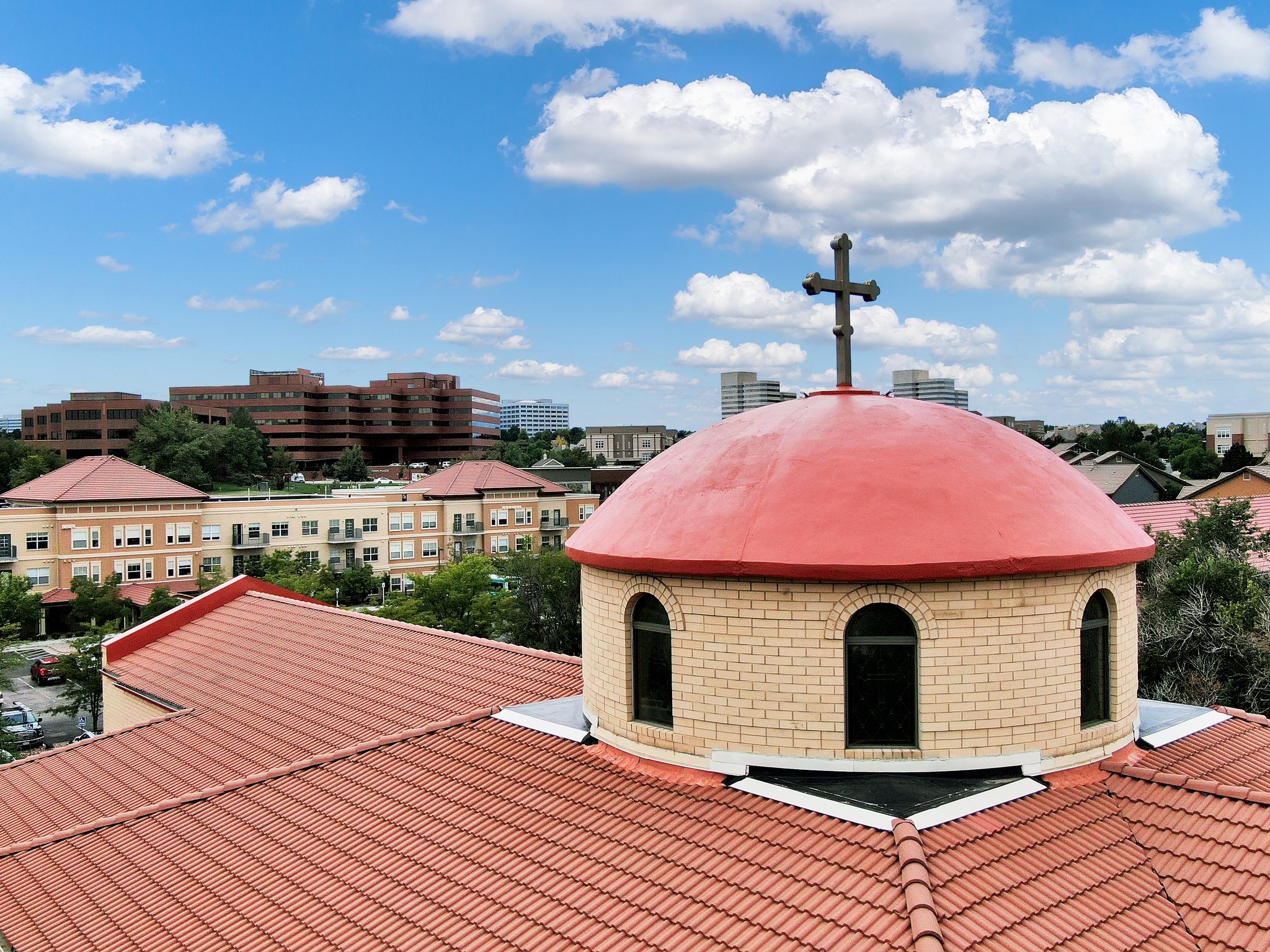Sacred Architecture
The Orthodox Church believes that God is the Creator of heaven and earth and is present through the creative energies of His handiwork. This means that the material world, being valuable and good, is an important means through which God expresses Himself. Orthodoxy recognizes that beauty is an important dimension of human life. The divine gifts of the material world are shaped and fashioned by human hands into an expression of beauty that glorifies the Creator. As the pious woman poured her most precious oil on the feet of our Lord (Luke 7:36–38), Orthodox Christianity seeks always to offer to God what is best and most beautiful.
Sacred Space
The art and architecture of the church interior are designed to contribute to the total experience of worship, involving one’s intellect, feelings, and senses. The different, even otherworldly sights, sounds, and smells of the temple communicate to us, through all our senses, that the church is God’s holy temple, consecrated solely to His glory and worship—a place where, in the words of the Divine Liturgy, we “lay aside all earthly cares, that we may receive the King of all who comes invisibly escorted by angelic hosts.”
The Eucharist and the other sacramental mysteries bear witness to God’s presence and actions. Therefore, in the Orthodox tradition there is a very strong feeling that the church is the house of God and the place where His glory dwells. For this reason, all Orthodox churches are blessed, consecrated, and set aside as sacred space. The whole church bears witness to God’s indwelling among His people. An Orthodox Church temple does not reflect the world as man sees it and knows it, but as God sees it and wills it to be: not fallen, but redeemed; not tired and old, but glorious and renewed; not separate from heaven, but joined with heaven; not distinct from the Kingdom, but a foretaste of the Kingdom.
The architectural design and style of the exterior and interior of St. Catherine is known as a Byzantine Basilica, representative of the 2,000 years of Christian tradition preserved and cherished by the Orthodox Christian Church. While Orthodox Christians in all ages and in all areas of the world have developed their own particular varieties of this style, there are characteristics common to all.
Domes, Not Spires
Orthodox church architecture and adornment are not matters of fleeting fad or taste, but tangible reflections of our timeless theology. An Orthodox church temple proclaims what we know and believe about God and His creation. Rather than spires and pointed arches aiming skyward, as if reaching for a distant God in a far-off heaven, the dome and rounded arches of the Byzantine tradition vividly witness to the fact that in the Incarnation heaven was poured out upon and united with earth; God became man, dwelt among us, and inaugurated His Kingdom, “which is here and which is to come.” When we enter an Orthodox temple, we leave behind our images and experiences of this fallen world to see and experience life in perfect communion with God.
Following ancient Christian tradition, most Orthodox temples are situated along an east–west line. (St. Catherine is along a north–south line due to zoning requirements.) Worshipers enter the temple from the west (symbolic of darkness) and worship toward the east (symbolic of light), the east being the direction from which dawned “Christ the Sun of Righteousness” and the direction from which He will again appear at His Second Coming.
Most Orthodox churches are covered by one or more domes, symbolizing God's covering over His creation.
The Narthex
Upon entering the temple you are immediately in the outer narthex, where you will find the restrooms as well as the stairways to the choir area. Passing through a second set of doors, you enter into the first section of the church proper, the large inner narthex, which is the entrance area. Centuries ago the narthex was the place where catechumens (unbaptized learners) and penitents remained during parts of the services.
Today, the beginning of the baptismal service and, in some parishes, the marriage service, begins in the narthex and proceeds into the nave. This procession symbolically represents a gradual movement into the Kingdom of God. In this entrance area the faithful may make an offering, offer a personal prayer, and light a beeswax candle to place on the candle stand, reminding us that Jesus is the light of the world, and He calls us also to be lights in the world.
The Nave, with Christ over All
The doors from the inner narthex lead into the nave, the large center area of the church where the faithful gather for worship. On the solea, the raised platform in front of the icon stand, the bishop’s throne sits at the right-hand side, from which he presides as a living icon, or image, of Christ among his people. Even in the bishop’s absence, the throne reminds all that the parish is not an isolated entity but is part of a diocese, which the bishop heads.
On the left-hand side of the nave is the pulpit from which the Gospel is proclaimed and the sermon preached. The chanters stand to the right, and the choir loft is in the back. Liturgy means “work of the people,” and all worshipers face the altar, where Christ, not the human participants, is the focus of our adoration.
High above the church, in the dome, is the icon of Christ the Almighty, or Pantocrator. On either side of Christ are the Greek letters IC (the first and last letters of the name “Jesus”) and XC (the first and last letters of the title “Christ”). In His halo is the divine Name in Greek O WM (the “I Am” of Exodus 3:14). The Lord is depicted not as we know Him now, but as He will appear at his Second Coming. This icon portrays the Triumphant Christ, who reigns as Lord of heaven and earth. As one gazes downward, it appears as though the whole church and all of creation come from Him. As one looks upward, there is the feeling that all things direct us to Christ the Lord. He is the “Alpha and the Omega,” the beginning and the end. This is the message of Orthodox Christianity.
His Eminence Archbishop Elpidophoros at the bishop's throne. The presence of the throne with an icon of Christ reminds us that Christ is the head of the Church.
Icons
Icon of The Resurrection of Christ
Take a video tour of Saint Catherine
Please see our Iconography page to explore and learn more about the iconography at St. Catherine.
An icon is a holy image and is the distinctive art form of the Orthodox Church. Our worship is directed toward the throne of God, and we find ourselves surrounded on all sides by sacred images of the Theotokos (the Virgin Mary, literally "God-bearer"), the saints, and the angels. These images remind us that we on earth join with the holy ones in heaven who perpetually praise and worship the Trinity: the eternal Father, the co-eternal Son, and the all-holy, good, life-giving, and eternal Spirit. Because the Divine Liturgy is a participation in the ongoing worship of heaven, the nave and the altar echo the depictions of heaven in Isaiah 6 and Revelation 4, with the saints and angels surrounding God’s throne.
Icons occupy a very prominent place in Orthodox worship and theology. The icon is not simply decorative, inspirational, or educational. The icon is like a window that links heaven and earth. Most importantly, it signifies the presence of the individual depicted. When we worship, we do so as part of the entire Church, which includes the living and the departed. We never lose contact with those who are with the Lord in glory. This belief is expressed every time one venerates an icon or places a candle before it.
Above the sanctuary in the apse, a large icon depicts the Theotokos with the Christ Child, her hands lifted in prayer and in invitation to come and worship Christ. This very prominent icon recalls her important role in the Incarnation of the Son of God. The icon is also an image of the Church, reminding us of our responsibility to give birth to Christ’s presence in our lives.
The Sanctuary
The sanctuary is considered the most sacred part of the church and is the area reserved for the clergy and their assistants. The sanctuary contains the Holy Altar and is separated from the nave by the iconostasis, the icon screen that joins the nave with the altar area.
This division serves to remind us that God’s reign is not complete and that we often find ourselves “separated” from God through sin. However, during the Divine Liturgy, when we have access to the Holy Gifts, we are reminded that, through Christ, heaven and earth are united and that through Him, we have access to the Father.
On the right-hand side of the iconostasis are always the icons of Christ and St. John the Baptist. On the left-hand side are always the icons of the Theotokos (Mary, the mother of our Lord) and the patron saint to whom the church is dedicated—in our parish, St. Catherine. Icons of the archangels Michael and Gabriel are also here, as well as other saints.
The Altar
The altar, or Holy Table, is the heart and focal point of the Orthodox Church. It is here that the eucharistic gifts of bread and wine are offered to the Father, as Christ commanded us to do. The altar stands away from the wall and is often covered with cloths. A small tabernacle with reserved Holy Communion for the sick or dying is set upon the altar, indicating that this is the place where God comes to meet His people.
Join Us!
As you can see, almost everything in an Orthodox Church temple has a special meaning and significance. We welcome you to St. Catherine and invite you to address any further questions to our clergy or Parish Council representative.






